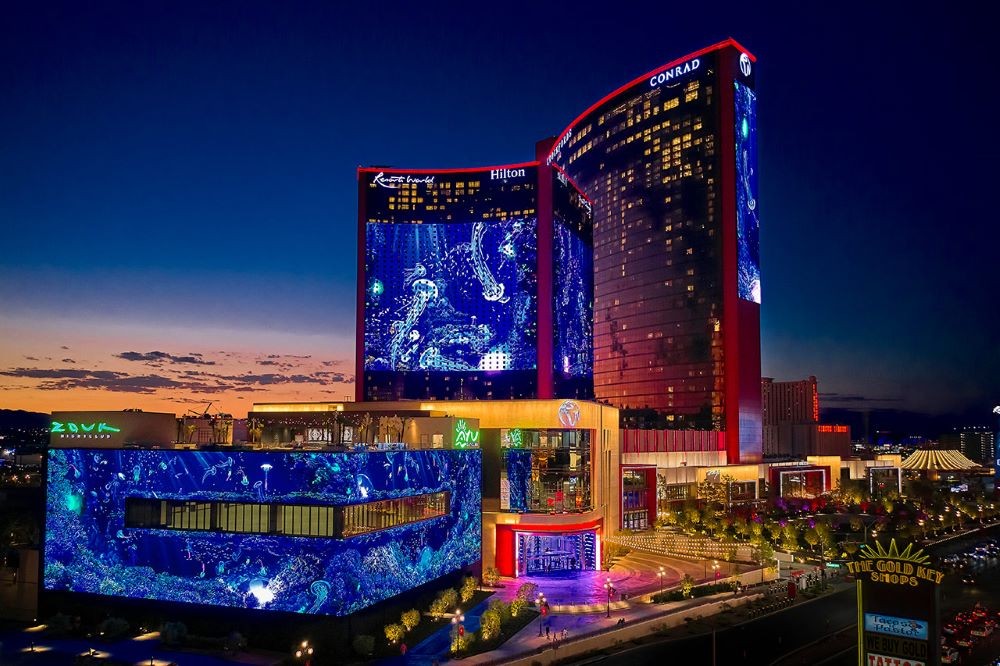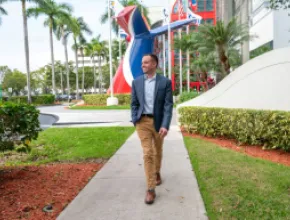From 1926 until 1974, U.S. 91 was the main thoroughfare between Los Angeles and Salt Lake City. Opened in 1931 on the section passing through the Nevada township of Paradise, the Pair O’ Dice nightclub, followed by the El Rancho casino-hotel (1941), paved the way for the future Las Vegas Strip.
By 1959 when the Las Vegas Convention Center opened, the northern end of this world-famous 4.2-mile thoroughfare, coined in 1947 in reference to a musical act from L.A.’s Sunset Strip, had become the heart of Golden Age Las Vegas.
Attention later shifted to the Strip’s center and southern sections, and by 2015 the old guard was mostly gone, leaving vast empty spaces and stardust memories.
Today, the cradle of the Strip is experiencing an ongoing multibillion-dollar revival. Not all the gaps are filled and there’s room to grow, but for groups, an emerging campus of historic and new venues offers a renewed sense of cohesion, community and curb appeal.
The Las Vegas Convention Center Turns 65
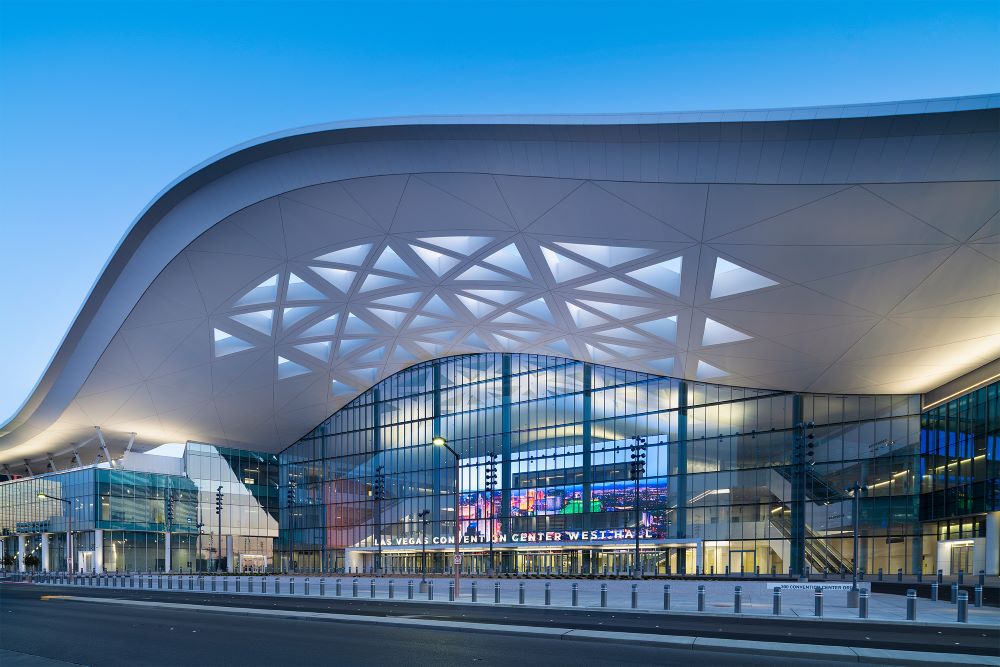
Launched in 1959 with the World Congress of Flight, the original 6,300-capacity, UFO-shaped Las Vegas Convention Center has since jumped into hyperspace as one of the world’s largest and most active convention venues.
Celebrating its 65th anniversary this April, the LVCC has undergone at least 14 expansions through the decades, including the demolition of the original silver-domed venue in 1991. Operated by the Las Vegas Convention and Visitors Authority, the LVCC today comprises a 4.6 million-square-foot facility offering 2.9 million-plus square feet of exhibit space and 390,000 square feet of space in 225 meeting rooms accommodating groups from 20 to 2,500 attendees.
Unveiled in 2021, the $1 billion, 1.4 million-square-foot West Hall expansion added 600,000 square feet of exhibition space, including 328,000 square feet of column-free space, the most in North America. Other features include an open-air atrium boasting a 10,000-square-foot digital screen, the largest such experience in a U.S. convention center, and a scenic 2,000-capacity outdoor terrace.
The 200-acre campus exemplifies Vegas’ standing as a solutions-driven world capital of innovation, by way of the underground Vegas Loop system. To walk from the North Hall to the existing halls takes nearly 30 minutes; it’s two minutes in the Loop’s all-electric Tesla vehicles. Currently operating three LVCC stations, plus another at Resorts World and two more opening soon at the Westgate and Wynn resorts, plans call for extending this pioneering transit system Strip-wide and beyond, including to Harry Reid International Airport.
Commenced in 2023, the $600 million renovation of the LVCC’s legacy campus is designed to “extend the technology, customer experience and contemporary design and architecture of the West Hall.” Targeting completion by 2025, the project has already produced programmable enhancements to the South Hall, including an outdoor plaza, enhanced lobby and prefunction space, and state-of-the-art boardroom.
Other investments include a climate-controlled interior concourse between the North and South Halls and enhanced technological connectivity.
Speaking of legacy venues, the Landmark Hotel (1969-1990) once stood on the convention campus. Commemorated with a neon sign, the dome-topped tower’s 1995 implosion appeared in the Tim Burton movie Mars Attacks!
The legendary Riveria Hotel (1955) was imploded in 2015. Fronting the Strip side of the convention campus, the 10-acre site awaits redevelopment.
[Related: Las Vegas Resort Leaders on Major Events, Game-Changing Developments and Meetings Momentum]
Major North Strip Makeovers
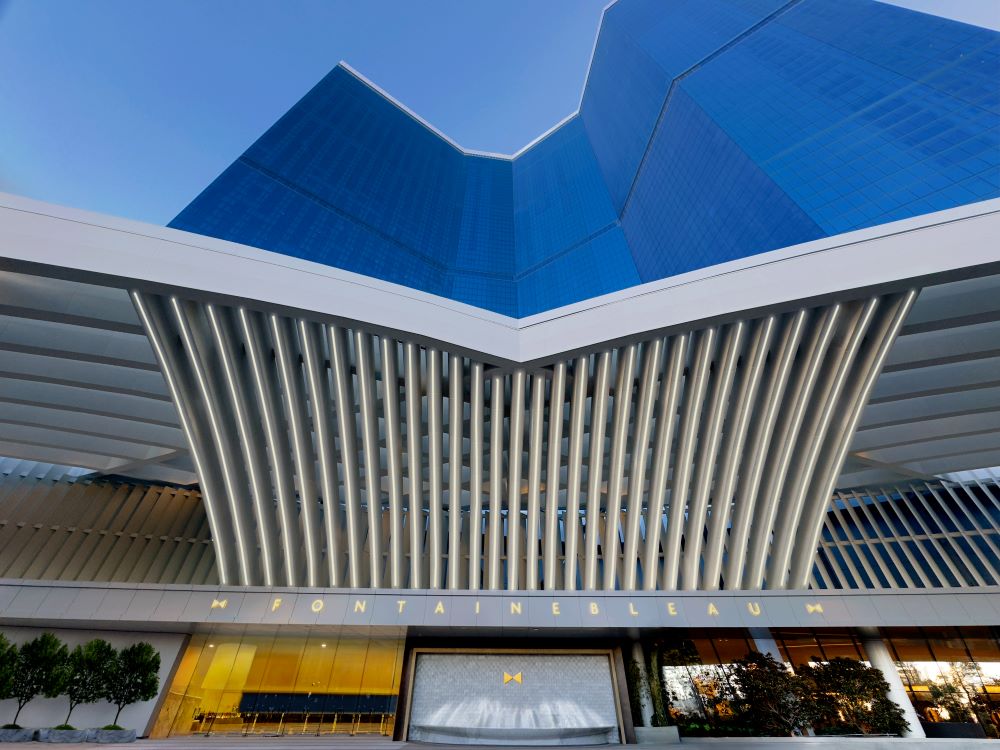
The modern North Strip resort corridor began in 2005 when the $2.7 billion Wynn Las Vegas opened on the site of the fabled Desert Inn, followed in 2008 by sibling property the Encore. These luxurious beacons integrate 560,000 total square feet of premier indoor and outdoor space.
Vegas roots run deep in the 35-plus-acre site across the Strip from Wynn, from the Pair O’Dice through the Last Frontier (1942), Silver Slipper (1950), New Frontier (1955) and The Frontier (1967). Vacant since the latter’s implosion in 2007, the site has seen development plans come and go.
Next door once stood the legendary Stardust. Opened in 1958 as the largest casino-resort in town, this glittering syndicate-run icon, with its galactic facade, inspired the Martin Scorsese-directed mob epic Casino.
Following implosion in 2007, its replacement, Echelon Place, was halted by the 2008 downturn. Thirteen years later, in 2021, the idled eyesore was reborn as Resorts World Las Vegas. Integrating 3,506 rooms across three Hilton hotel brands, the $4.3 billion property offers 320,000-plus square feet of space that includes six configurable ballrooms and 50 meeting rooms.
Created by Jay Sarno of Caesars Palace fame, neighboring Circus Circus is an enduring vestige from 1968. Across the Strip, adjacent to the Riviera site, stands another magnificent post-2008 phoenix, Fontainebleau Las Vegas.
Inheriting the earth where the Thunderbird (1948), Algiers (1953), Silverbird (1977) and El Rancho (1982) once stood, this glamorous 67-story, 3,644-room tower pays homage and takes design inspiration from its iconic sibling, Fontainebleau Miami Beach, while asserting its own Vegas identity. The magnificent porte cochere and stunning lobby set the tempo for luxury upon arrival.
Facing the LVCC’s West Hall, the blue-glass tower rises from a six-level podium that vertically integrates the gaming floor, luxury shops, spa, 36 restaurant and bar concepts, and 550,000-square-foot conference center. Blending scale with intimacy, venues include a 105,000-square-foot pillarless ballroom, 57 breakout rooms and 3,800-seat BleauLive Theater.
This May, a local development group announced plans for a multibillion-dollar 2,500-room resort anchored by an NBA-ready stadium on the adjacent empty lot, where Wet ‘n Wild waterpark once stood.
Opened in 1952 and recently transformed to the tune of more than $200 million, SAHARA Las Vegas is the only surviving casino-resort from the fabulous 1950s era. Located at the Strip’s northern edge, the three-tower, 1,615-room property offers 85,000-plus square feet of flexible indoor and outdoor space.
[Related: Las Vegas Steakhouses Ideal for Private Dining or Buyouts]
History Is Served at These North Strip Restaurants
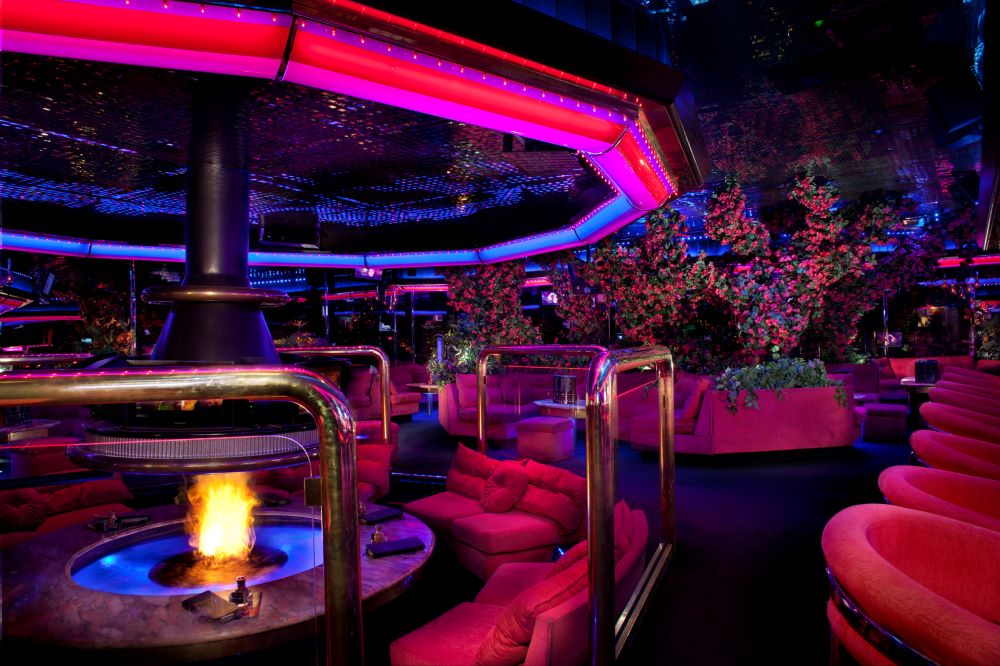
Groups with a taste for vintage Vegas can choose from an enticing, eclectic set of North Strip area dining options.
Opened next to the LVCC in 1969, The International Hotel then became the Las Vegas Hilton, home of Elvis Presley’s epic 1970s run of 636 shows in the International Theater (surpassed by Barry Manilow in the same venue last September). Now Westgate Las Vegas, the storied off-Strip resort retains the wonderland group-capable Benihana Village (1974) in its restaurant collection.
This February, the James Beard Foundation named the Peppermill Restaurant and Fireside Lounge one of six recipients of its 2024 America's Classics Award. Opened in 1972, this kitschy treasure is pure Vegas with its pink and purple neon nights, fire pits, diner classics and big cocktails. General Manager Peggy Orth began waitressing at the Peppermill in 1974 when she was 17. She’s still here along with her son and executive chef Nicholas.
Catty corner from SAHARA Las Vegas, Golden Steer Steakhouse has been sizzling since 1958.
Originated as Villa d’Este in the 1960s, Piero’s Italian Cuisine & Seafood is another old-school gem. Relocated to its present Convention Center Drive location in 1987, this event-capable landmark attracts conventioneers and celebrities alike.
Foxy’s, the first Jewish deli in town, held court where Sahara Avenue meets the Strip from the mid-1950s to 1975. Located by the LVCC West Hall, Siegel’s Bagelmania, from 1986, is today’s go-to for classic deli fare and indoor and outdoor events, 200-plus capacity buyouts included.



